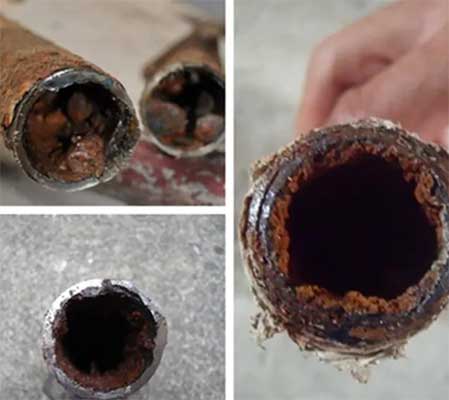Evaluating the suitability of galvanized pipes for drinking water pipe.
When decorating a new house, plumbing decoration is a very important thing, because it is related to our daily water, water is the source of life, only by drinking water regularly can we be healthy, but if the water quality is not good, it will also be related to Our lives are closely connected. Therefore, we must ensure the health of the water source to ensure our health. Therefore, we must pay special attention when we carry out water pipe decoration, otherwise it will cause very bad effects.
Since we usually use tap water to reach every household through pipes, the choice of pipes is particularly important. We must pay special attention to the selection of pipelines. When we choose the right water pipe, the water will be clear and sweet. If we choose the wrong water pipe, the water will turn yellow and smell bad. This is the galvanized water pipe.
Possible but not recommended. Galvanized pipes can be used as drinking water pipes, but the water must be boiled for drinking. However, after a long time of use, the lead and zinc in the galvanized pipe will precipitate into the water, and the pipe wall is prone to scale. As time goes by, the inner diameter of the pipe will become smaller and smaller, and the water pressure will become smaller and smaller, which is also harmful to health. Most drinking water pipes are now PPR pipes or stainless steel pipes, which have a long service life, are easy to install, and have no harmful substances seeping out.
Before the 1990s, galvanized pipes were basically used as drinking water pipes, and then they were replaced by aluminum-plastic pipes and PP-R pipes. In comparison, galvanized pipes mainly have the following disadvantages:
1. It is easy to rust and scale, and there will be water rust after a long time of use.
2. The installation is troublesome. The galvanized pipe needs special cutting and threading tools, and the installation is very troublesome.
3. The interface is easy to leak after a long time.
4. The production process of galvanized steel pipes has low efficiency, serious pollution and is not environmentally friendly.

Every day, we brush our teeth, take a bath, wash vegetables, cook and drink water. The water must be supplied through such pipes. How harmful is it? No wonder the World Health Organization says that 80% of diseases are related to water pollution and improper drinking water. is the root of many diseases.
The inner wall of the water pipe is corroded and scaled, and organic humus is produced. With this kind of pipe, it can be said that there will be endless troubles. The tap water is yellow and has a peculiar smell. Drinking unclean water for a long time, some pollutants will precipitate on the blood vessel wall, thereby accelerating the occurrence of cardiovascular and cerebrovascular sclerosis, high blood pressure, heart disease, cerebral thrombosis and other diseases. In addition, the deposition of impurities in the body can easily cause various stones. Water bodies polluted by heavy metals such as cadmium and arsenic are harmful to human health.
In fact, galvanized water pipes have been banned by the state, but there are still companies selling them secretly, and most people don’t understand this. The water pipes are also very strong, but if they get rusty in the later stage, the merchants will not be found. Many of our older houses have this kind of plumbing. From the appearance, we can clearly see the rust phenomenon. We can imagine what the water looks like, so we should not use this kind of water pipe.
For more, visit: www.permanentsteel.com
In this episode, I sat down with Beejan Giga, Director | Partner and Caleb Emerson, Senior Results Manager at Carpedia International. We discussed the insights behind their recent Industry Today article, “Thinking Three Moves Ahead” and together we explored how manufacturers can plan more strategically, align with their suppliers, and build the operational discipline needed to support intentional, sustainable growth. It was a conversation packed with practical perspectives on navigating a fast-changing industry landscape.